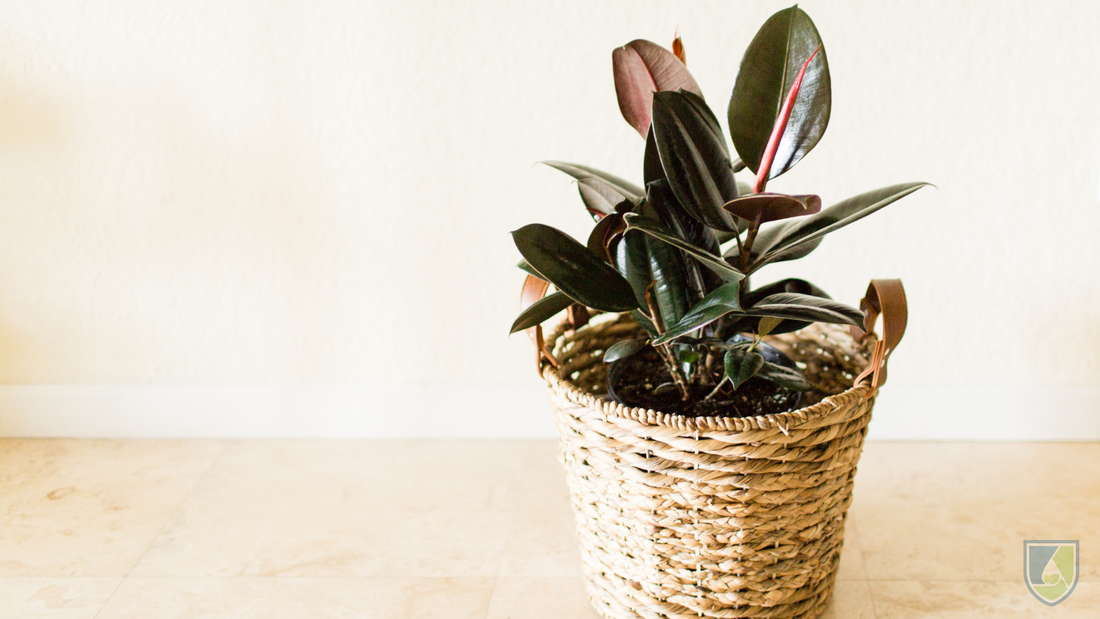
Micropropagation of Ficus spp. (Fig Tree)
As a content and community manager, I leverage my expertise in plant biotechnology, passion for tissue culture, and writing skills to create compelling articles, simplifying intricate scientific concepts, and address your inquiries. As a dedicated science communicator, I strive to spark curiosity and foster a love for science in my audience.


Introduction
Ficus trees, also known as Fig trees or Figs, are native to tropical areas of East Asia. However, some others also extend into the semi-warm temperate zone. The tree has economic, but also decorative, and religious significance in many regions of the world.
The most common fig, Ficus carica, native to Southeast Asia and Mediterranian regions, is wildly cultivated for its fruits since ancient times. Fruits of some other Figs are also eaten locally as bush fruits.
The Ficus genus belongs to the family of Moraceae and has around 900 species consisting of woody trees, shrubs, and vines—all commonly known as figs. Many of these are tall forest trees, spreading out their roots deep inside the soil. While some of them are grown as ornamental plants.

This article describes the physical appearance of the Ficus trees, their propagation, and a protocol to grow Ficus in tissue culture.
Physical Description of Figs
Figs are found in both tropical areas and at some higher elevations. They are quite popular for their unique inflorescence and unique pollination syndrome (connection of floral traits or features with the specific functional group of pollinators—or simply flower features that attract pollinators). The leaves of the tree are thick; simple, alternate, entire, or lobate; and waxy, which releases white or yellow latex when torn out.
Most of the Fig species have quite distinctive aerial roots or are epiphytic (roots that hand down in the air). The structure of the fruit of the tree is quite unusual. It’s an inflorescence with tiny male and female flowers lining the inside and all of this is enclosed in an urn-like structure called a syconium. The fruit is thick and cracks upon ripening.

The pollination of the Ficus genus is carried out by highly specific wasps, known as fig wasps. They enter the flower through an ostiole in the inflorescence, where they pollinate their flowers and lay their eggs.
Some of the major species of the Ficus trees include:
- Ficus carica
- F. obtusifolia
- F. nymphaeifolia
- F. insipida
- F. benghalensis
- F. religiosa
- F. sycomorus
- F. elastica
- F. benjamina

Cultivation of Fig trees
Ficus trees have specific requirements for their growth and development. They need special care, except for a few species that are quite flexible. F. benjamina is a popular bonsai that can be braided and shaped in desired forms for indoor decorative purposes.
Other than decorative purposes, the Fig trees also have medicinal applications. They are used in treating various diseases, such as hemorrhoids and rheumatism. Moreover, the extracts (containing phenolic compounds) from the leaves of the plants are used to treat hepatic, diabetes, and renal stones.
The conventional methods to grow the Ficus plant is through stem cuttings, layering, grafting, or seeds. The general steps followed by the cultivators to grow Ficus using stem cutting are as follows
- Cut off a 15 cm or 6 inches long stem below the node, with a few leaves, from the mother plant.
- Remove the bottom leaves from the cuttings.
- Transfer the stem to a glass of fresh water.
- Place the glass in a warm and slightly humid region, with bright light. Avoid direct light on the plant.
- In about three weeks, roots are observed. Then transfer the stem to a soil-based potting mix.
- Water the plant as the soil dries out.
- Soon, your plants will establish themselves in the environment and new leaves will be observed when taken care of properly.

Tissue Culture of Ficus carica
Though conventional techniques might seem like an easier approach to growing Fig plants, there are certain challenges associated with them.
- The slow growth rate of plants
- Time-consuming process
- Difficulty controlling pathogens, such as nematodes, mites, and mosaic viruses.
- Low survival rate
- Poor rooting
- Lower yield
- Limitation in commercial-scale propagation due to the requirement of a huge number of stem cuttings and a large area for the propagation of Fig plants.
In such cases, tissue culture can be used as an alternative approach to grow these plants and fight such challenges in Fig's commercial system. The advantages offered by tissue culture include:
- Production of disease-free plants
- Rapid-production of plants
- Large-scale production in a small area
- Requirement of only a few tissues for the growth of whole plants
- Conservation of plant species

Protocol For Tissue Culture of Fig Plants
Here’s a procedure to tissue culture Ficus carica, taken from the study of Azhar, Nur & Zainuddin, Zarina. (2020). TISSUE CULTURE OF Ficus carica VARIETY BTM-6. Malaysian Journal of Sustainable Agriculture. 4. 26-28. 10.26480/mjsa.01.2020.26.28.
Explant collection and Surface Sterilization
- Collect healthy and young leaves from the mother plants.
- Wash the explant thoroughly under running tap water overnight.
- Pre-treat the explant using fungicide (0.2% Carbendazim) for 30 minutes.
- Rinse the explant thoroughly with sterile distilled water twice for 2-3 minutes.
- Soak the explants in 70% (v/v) ethanol for seconds.
- Incubate the explants in 2.5% (v/v) sodium hypochlorite for 15 minutes.
- Rinse the explants using sterile distilled water three times.
- Dry the explants using sterilized filter paper.
- Cut the leaves into 1cm X 1cm using a sterilized scalpel.
Shoot Induction and Multiplication
- Prepare a culture medium using MS basal media, 30 grams sugar, and 8% agar. Also, add 2.0 mg/l BA + 0.5 mg/l NAA.
- Incubate the cultures in a growth room with 25 ℃, 6.-70% humidity, 16/8 hours day/light cycle with 2500 Lx light intensity.
So far, the paper only presents the steps of multiplication of the plant. The rooting and acclimation procedures are not yet covered as checked in the different studies on the Ficus plant tissue culture. However, if any protocols on these stages are found in the future, we will update the same here.
Get The Best Tissue Culture Experience With PCT Products And Equipment
Plant Cell Technology is helping tissue culturists worldwide by providing unique and world-class products and services that smoothen their process. The PCT Store has MS media, agar, gellan gum, Plant Preservative Mixture (PPM), culture vessels, BiocouplerTM, and masks in its store to facilitate your processes.
And, that’s not it! Plant Cell Technology also offers consultation services to culturists of all sizes that help to get instant solutions to your tissue culture problems.
You can either book a one-on-one consultation call or a physical visit to your lab. We help you at every step of the tissue culture process, ranging from establishing a tissue culture lab to preventing contamination problems or any specific challenges in your process.
So, visit plantcelltechnology.com today and learn more about our products and services and how they help you excel in your tissue culture processes.
Happy Culturing!
Blog Categories
View by Level
Popular Blogs

How Samantha Bridges the Gap Between the Nursery and the Lab
The Introduction Building a tissue culture program from the ground up requires more than just scientific knowledge—it requires the grit...
Read More
Understanding The Synthetic Seed Technology
Introduction Let’s be honest: traditional plant propagation can be a logistical nightmare. If you’re working with recalcitrant species—those stubborn plants...
Read MoreSubscribe to Our Newsletter








Join the conversation
Your email address will not be published. Required fields are marked